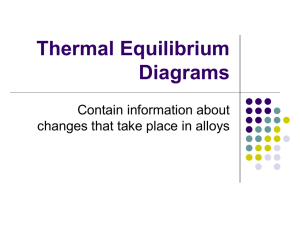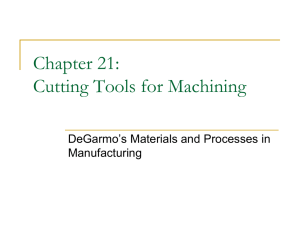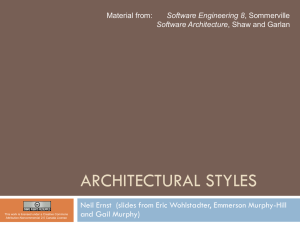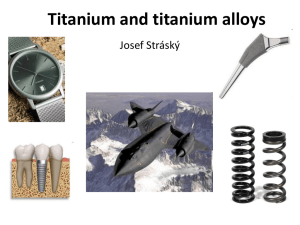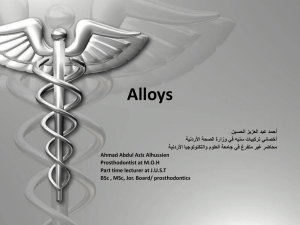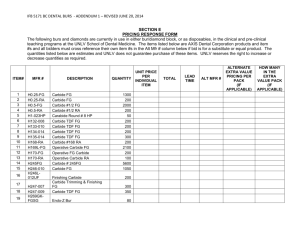УДК 621.793.3 Changing the properties of carbide tips to application
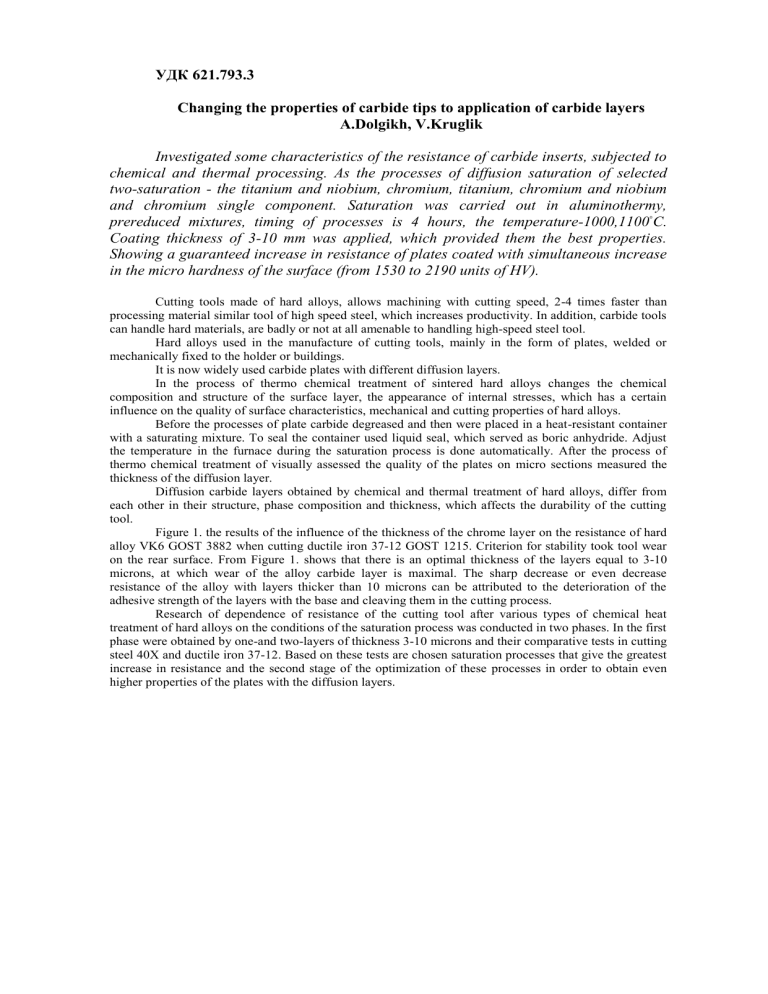
УДК 621.793.3
Changing the properties of carbide tips to application of carbide layers
A.Dolgikh, V.Kruglik
Investigated some characteristics of the resistance of carbide inserts, subjected to chemical and thermal processing. As the processes of diffusion saturation of selected two-saturation - the titanium and niobium, chromium, titanium, chromium and niobium and chromium single component. Saturation was carried out in aluminothermy, prereduced mixtures, timing of processes is 4 hours, the temperature-1000,1100
◦ С.
Coating thickness of 3-10 mm was applied, which provided them the best properties.
Showing a guaranteed increase in resistance of plates coated with simultaneous increase in the micro hardness of the surface (from 1530 to 2190 units of HV).
Cutting tools made of hard alloys, allows machining with cutting speed, 2-4 times faster than processing material similar tool of high speed steel, which increases productivity. In addition, carbide tools can handle hard materials, are badly or not at all amenable to handling high-speed steel tool.
Hard alloys used in the manufacture of cutting tools, mainly in the form of plates, welded or mechanically fixed to the holder or buildings.
It is now widely used carbide plates with different diffusion layers.
In the process of thermo chemical treatment of sintered hard alloys changes the chemical composition and structure of the surface layer, the appearance of internal stresses, which has a certain influence on the quality of surface characteristics, mechanical and cutting properties of hard alloys.
Before the processes of plate carbide degreased and then were placed in a heat-resistant container with a saturating mixture. To seal the container used liquid seal, which served as boric anhydride. Adjust the temperature in the furnace during the saturation process is done automatically. After the process of thermo chemical treatment of visually assessed the quality of the plates on micro sections measured the thickness of the diffusion layer.
Diffusion carbide layers obtained by chemical and thermal treatment of hard alloys, differ from each other in their structure, phase composition and thickness, which affects the durability of the cutting tool.
Figure 1. the results of the influence of the thickness of the chrome layer on the resistance of hard alloy VK6 GOST 3882 when cutting ductile iron 37-12 GOST 1215. Criterion for stability took tool wear on the rear surface. From Figure 1. shows that there is an optimal thickness of the layers equal to 3-10 microns, at which wear of the alloy carbide layer is maximal. The sharp decrease or even decrease resistance of the alloy with layers thicker than 10 microns can be attributed to the deterioration of the adhesive strength of the layers with the base and cleaving them in the cutting process.
Research of dependence of resistance of the cutting tool after various types of chemical heat treatment of hard alloys on the conditions of the saturation process was conducted in two phases. In the first phase were obtained by one-and two-layers of thickness 3-10 microns and their comparative tests in cutting steel 40X and ductile iron 37-12. Based on these tests are chosen saturation processes that give the greatest increase in resistance and the second stage of the optimization of these processes in order to obtain even higher properties of the plates with the diffusion layers.
Layer thickness, microns
Figure 1. The influence of the thickness of chromium layer on the resistance of hard alloy VK6.
Comparative data on the wear resistance of carbide layers on a single-component hard alloy VK6 when cutting ductile iron 37-12 and the alloy T15K6 at cutting steel 40X are shown in Figure 2. Tests were performed at cutting speed V = 100 m / min, amount of feed S = 0.2 mm / rev and depth of cut t = 1.0 mm.
Diffusion saturation was carried out by regime ensuring the carbide layer thickness of 3 - 10 microns. The ordinate value of the persistence of К с
equal to the persistence tool with a layer of resistance to cutter in original condition. From the data of Figure 2. it can be seen in all cases, the substrate of the carbide layers has increased tool life from both VK6 alloy and alloy T15K6, and the alloy VK6 coats ensures greater increase in resistance than the alloy T15K6. This is due to higher wear resistance of the initial alloy T15K6 containing 15% (by weight) of titanium carbide.
ВК6
Т15К6
Figure 2. Relative stability of the tool with a layer of resistance to cutter in original condition.
Significant increase in carbide tool wear attaches layers of titanium carbide, but they were obtained at saturation of the mixtures based on titanium powder. Slightly smaller increase in resistance observed in the tool with layers of vanadium carbide and tantalum carbide. Followed NbC, Cr
23
C
6
, ZrC, MoC and WC.
When coupled with saturation of Ti and Nb, Cr and Ti, Cr, and Nb carbide fibers were obtained with high properties, in particular, the micro hardness. Effect of saturating the mixture on the wear resistance of hard alloys VK6 when cutting ductile iron 37-12 and T15K6 at cutting steel 40X after the processes of diffusion saturation shown in Figure 3. Saturation was carried out at a temperature of 1000
◦
C for 4 hours.
In all cases, the dependence of the resistance of cutting tools on the composition of the saturating mixture has the form of curves with a maximum. Maximizing the stability in all cases approximately the same. All of this suggests that the saturation of the compositions, which give maximum durability, the solid alloys formed layers close to the optimal layer thickness, phase composition, strength and other quality characteristics
It is worth noting Fig. 3, which shows the dependence of the resistance of the composition of the saturating mixture at titanium and niobium (separate recovery of oxides). The maximum wear resistance was obtained at saturation of 60% TiO
2
+ 40% Nb
2
O
5
.
Figure 3. Dependence of the resistance of the composition of the saturating mixture.
1 T15K6, 2-VK6
1.The study found that there is an optimum thickness of diffusion layers, equal to 3.10 microns, at which the mechanical properties of hard alloy coating with a maximum. The sharp decrease in values for carbide layers thicker than 10 microns explained by the deterioration of the adhesive strength of these layers to the substrate, the accumulation of structural stresses, the nature of the phase, which leads to chipping of the layer.
2.When applying carbide layers has increased tool life. When applying layers on alloys with higher initial wear ensured greater increase in resistance.
3.There exists an optimal composition of the saturating mixture, giving a maximum durability.
Literature
1. V. Pohmursky ”The influence of diffusion coatings on the strength properties of steel / Protective coatings metals”.-Kiev, 1970 .- № 3.-s191-200.
2. V.Pohmursky “Some aspects of strength and ductility of steel subjected to diffusion saturation / Protective coatings metals”.-Kiev, 1972 .- № 6.-s151-156.
3. A.Brohin, V. Tumanov “Some physical and mechanical properties of hard alloy with wear-resistant coatings of titanium carbide / hard alloys and refractory metals.”-M. Metallurgy, 1976. № 16 .- s136-142.
4. M.Berstein “Structure and mechanical properties metals.”-M.: Metallurgy, 1970.-472b.
5. G. Kramer, “The strength of hard alloys.”- M.: Metallurgy, 1971.-248s.
6. O.Kubaschewski, V. Hopkins “Oxidation of Metals and Alloys”-M.: Metallurgy, 1965.-428s.



